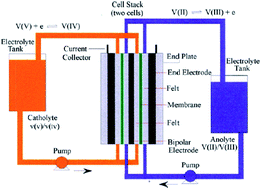Recent development of polymer membranes as separators for all-vanadium redox flow batteries
Abstract
The all-vanadium redox flow battery (VRFB) is one of the most promising energy storage systems to be associated with the grid. The system has been developed for almost 30 years. A key component for VRFBs is the membrane separator, which separates the positive and negative half-cells and prevents the cross-mixing of vanadium ions, while providing required ionic conductivity. In general, research is conducted to solve a multi-variable problem which requires optimization in both physical characteristics and electrochemical performance of the membrane. Nafion and its derivatives are still important materials thanks to their high chemical stability and ionic conductivity. However, weaknesses of these materials, such as high vanadium ion crossover and high cost, stimulate new approaches in materials design for VRFBs. New achievements in material sciences and polymer chemistry allow further development of other types of polymeric materials and composites as separators in VRFBs. This includes new cation exchange membranes, anion exchange membranes, amphoteric ion-exchange membranes, and non-ionic porous materials. Each type of material exhibits its advantages, accompanied by its weaknesses. Recent articles in polymer-containing membranes for use as separators in VRFBs are reviewed.

- This article is part of the themed collection: Polymers for Electrochemical Energy Storage

 Please wait while we load your content...
Please wait while we load your content...